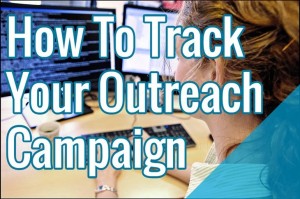We get a lot of questions about good brand story, especially from startups and young companies. In first establishing their businesses, many have not had the time to even consider brand story yet. Worse, they often assume a “brand” is just a logo and a web page—but they couldn’t be more wrong. Story is critical to growing your audiences and building on past success.
But truly successful storytelling takes insight, experience, research, and strong execution. If you’re struggling with finding your story, here are my four foundational pointers to get started.
1. Tell a Compelling Story!
I know, sounds obvious. Right? But you’d be surprised how few actually get this simple idea. Never use your brand story to just list general qualities of your product. Don’t bore people! If you offer a ton of adjectives about your wonderful brand, trust me, you will lose audience. Audiences today are too sophisticated for that—they’ve seen it all before.
Instead, focus on how your brand helps or changes people. Audiences must connect with your brand and come to understand how it will improve their lives. You may evoke emotions to do this, but you don’t have to. You may give people a good laugh, but you don’t have to do that either. Above all, what you must do is give them a compelling vision—something to aspire to. Inspirational storytelling is what works. Once you do that, you’ve got them hooked.
2. Be Ruthlessly Consistent
Stories are, at heart, about relationships. The relationship you’re building through storytelling will be compromised if you don’t maintain consistency in what you do. The core values of your brand are central to this, so don’t ever go back on those. Customers will feel as betrayed as a friend would if you suddenly disavowed your beliefs and abandoned ship.
Instead, make your core values the most prominent part of your brand. Keep your message consistent in all marketing channels—online, out-of-home, television, radio. This consistency is what turns ordinary customers into advocates, and also what turns “on the fence” audience members into buyers. The more consistently they hear from you, the more likely they are to finally engage.
3. Think Deeply About Audience
Who’s your target audience? Not just the demographic, but who are they really—age, work, background, preferences, status, interests, dreams. Once you know some of this, you can start to consider what motivates them.
This matters a lot. It takes time and research, and a lot of data analytics, to do it right. But in the end you’ll be glad to have some sense of exactly who you’re talking to you. It helps you to speak to them in the most effective way possible. But it takes time. You’ll have to A/B test and do some investigating to find out what works and what doesn’t—and you probably won’t get it right the first time, either. But if you don’t know who you’re speaking to, you’ll end up bending the ear of someone who just doesn’t care about your product.
4. Consider the How
Are you writing blogs? Designing a new website? Doing TV spots, radio? Maybe you want hardcopy collateral for some reason—flyers, pamphlets, mailers. Or perhaps all of it together?
You need to know how you’re speaking to your audience. It’s as important to get video content right as it is to get your website and published material right, for sure. But if one is more important than the other at one particular moment, ensure that you have adapted your story to that medium. This is a common problem! Especially with legacy companies who once felt they could just dump their thirty year-old brand story into modern-day social media. That doesn’t work!
The message, as they say, is in the medium. So consider how audiences will be consuming your brand story, and adjust or adapt your story for that platform.
Business & Finance Articles on Business 2 Community
(50)
Report Post





